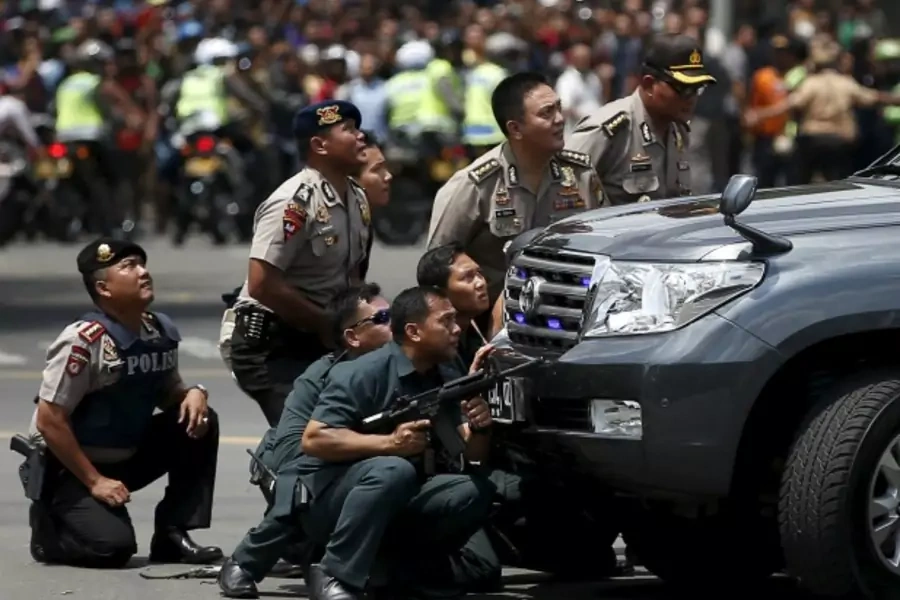More on:
After the attacks in Jakarta in January, in which a group of gunmen, apparently overseen by a man affiliated with the self-declared Islamic State, shot and bombed their way through a downtown neighborhood, Southeast Asian governments began to openly address the threat of Islamic State-linked radicals. The region’s intelligence agencies, and especially Singapore intelligence, had been warning for at least two years that Southeast Asian men and women were traveling to Islamic State-controlled territory for training and inspiration, and that the region’s governments had no effective way to track these militants’ return. According to estimates by several regional intelligence agencies, between 1,200 and 1,600 Southeast Asians had traveled to Islamic State-controlled areas and possibly returned to their homelands. Other estimates put the figure even higher.
The Islamic State clearly recognizes the potential for radicalizing Southeast Asians, one of the largest pools of Muslims in the world. The Islamic State has released a series of videos, posted on the Internet and social media, appealing directly to people speaking Bahasa (Malay or Indonesian.) The group has created a brigade of fighters in Syria for incoming Malaysians and Indonesians, a brigade known as Katibah Nusantara, or “Malay archipelago.” The brigade reportedly has been involved in battles with Kurdish forces, capturing territory from the Kurds last year. Returning to the region, Islamic State-trained militants may plan attacks to demonstrate their devotion and establish themselves as leaders to be feared. The Jakarta-based Institute for Policy Analysis of Conflict (IPAC) wrote in early February that in the coming months, “more terrorist attacks in Indonesia are likely as local ISIS leaders compete at home and abroad to establish their supremacy.”
Following the Jakarta blasts, Indonesian authorities arrested at least two dozen people (the exact number remains unclear) suspected of possibly planning future attacks. Sensing that the number of Islamic State-inspired radicals was higher than original estimates, in March the Indonesian National Intelligence Agency drew up plans to hire roughly 2,000 more intelligence agents focused on counterterrorism. The Jokowi administration, and the Indonesian parliament, also is considering passing “preventive detention” laws that would allow the authorities to hold terror suspects for up to six months without charging them.
Yet the Jakarta attacks did not send Southeast Asian governments most vulnerable to the Islamic State threat---Indonesia, Singapore, Malaysia, the Philippines, and Thailand---into a total panic. After all, the Islamic State, though a danger, is not as much of a threat to Southeast Asia as the group is to countries in the Middle East, Africa, or Europe. For one, many regional leaders and intelligence analysts understand that, compared to regions like Europe and the Middle East, the number of Southeast Asians who have traveled to Syria or Iraq to receive training and funding is relatively small. This number remains small in part because of the openness and democracy of countries like Indonesia, which allows Islamists to air their grievances heard through the political system. Even if 2,000 or 2,500 Southeast Asians have made the journey, as some Malaysian intelligence officers believe, this figure pales in comparison to the number of Tunisians or French and Belgian citizens who have traveled to join the Islamic State.
For more on my analysis of why the Islamic State does not pose a great threat to Southeast Asia, see my new piece on Southeast Asia and the Islamic State in The Diplomat.
More on:
 Online Store
Online Store
